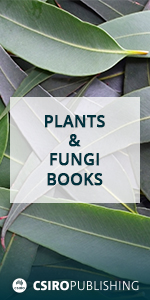BT25036Ovulate cone and seed biology of Wollemia nobilis (Araucariaceae) and comparison with Agathis microstachya and Araucaria cunninghamii
Wollemia nobilis has separate male and female cones on a single plant (monoecious). While most gymnosperms are dioecious, Wollemia nobilis has the possibility of self-fertilisation. Seed production of a single isolated tree was studied. While some cones produced no viable seeds, in some cones 10–20% of scales had seeds with a well-formed megagametophyte and embryo. This megagametophyte and embryo could germinate more rapidly than is usually reported for the species. Wollemia nobilis can produce viable, vigorous seeds through self-fertilisation. Photograph by Geoffrey E. Burrows.
BT25036 Abstract | BT25036 Full Text | BT25036PDF (4.5 MB) Open Access Article




















